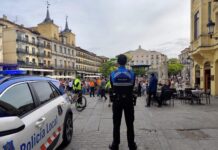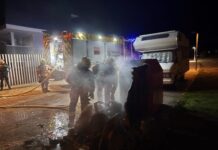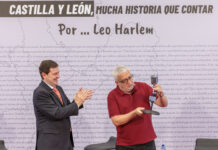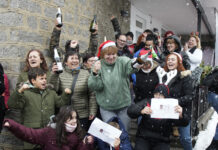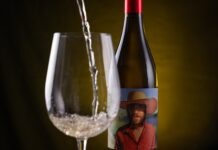The Austrian Manfred Gaulhofer jury president for the European Cultural Capital 2016 classify Segovia’s project as “unusual” and different to the other candidate cities.
In the final evaluation and after a full day walking about the Aqueduct city, the jury highlighted as a differential factor the integration of the city with its landscape. These were mentioned in detail as well as the many social and cultural agents involved in the project and the extension of the program out of city limits.
The members of the jury (the Austrian Manfred Gaulhofer, from Poland Danuta Bolndifs, and the two Spaniards Jordi Pasqual and Emilio Casinello), gave their impressions to the many journalist after their 24 hour stay in the city. They valued the “ambition” of the promoters to obtain the honor of European Capital.
Mr. Gaulhofer surprised the journalist when he said that the Segovian proposal was unusual. He was asked to expand on his comments. He said that this project has something unique, it wants to take its project to other towns and villages in the area, this is something particular which I haven’t seen before with other candidates. Following the same line, the Spanish representative Jordi Pasqual said: This is not standard.
They also mentioned that the proposal was ambitious but paused. “We live in a world in which things go very fast and Segovia proposes a project which goes slower and which views things in a different way”, he said.
Mr. Gaulhofer had words to recognize the full support from all social and economic agents who have worked hard to make this candidacy go forward. “All those who are behind this project are absolutely convinced of their possibilities” he said in presence of the acting Mayor Pedro Arahuetes and of the PP candidate Jesus Postigo. “We have had the chance to speak to all agents involved; artists, businesspeople, politicians, people from different culture entities and citizens and I must say that the experience has been enriching”. The jury president also assured he had understood the degree of support from all the agents and citizens.
A significant Position
Asked about the geostrategic position of Segovia due to the proximity of Madrid and if this could help, the jury president said that it wasn’t significant. Precisely it is one of the elements in which the city supports its availability in infrastructures and hotels.
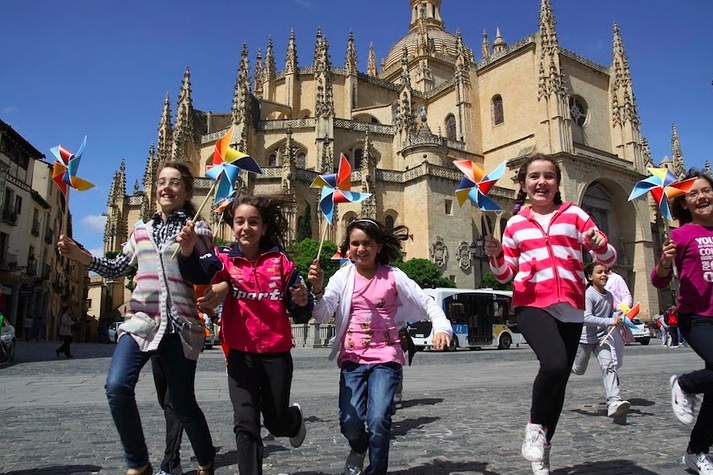
The representative of the Ministry of Culture, Jordi Pascual, classified the Segovian candidacy as “realist, solvent and very ambitious”. “Segovia is a project which responds to what it is today and what it can become tomorrow; it is not standard but shows what it is and what it can be in 2016”. What’s more he underlined, were the synergies which it already has and the close relationship with the landscape”.
The Polish representative Danuta Bolndifs, also said she felt “surprised·” from all support the candidacy has received from citizens and emphasized the “European dimension” that Segovia has proved with the many initiatives alongside Polish cities who also aspire to become European cultural cities. “It’s a proposal which attracts ones attention as tries to not to make a candidacy to obtain funds to help it grow but truly a cultural steady project.
The itinerary
The morning began with a reception in the Hotel San Facundo at about 10:00 in which the acting mayor Pedro Arahuetes, the candidates from Partido Popular Jesus Postigo and Luis Peñalosa from Izquierda Unida attended. After the reception, the committee went to the center of town passing under the aqueduct and up the calle Real and stopping at La casa de los Picos and the Torreón de Lozoya.
After visiting the Jewish quarters and before savoring a “tapa” in one the of the sidewalk cafes in the main square the jury then enjoyed an activity organized by different schools who made colorful paper wind mills with the colors Segovia 2016.
After that, the Juan Bravo theatre opened its doors to welcome the committee. At about 14:00, they stopped to have lunch at the Parador after visiting the San Jaun de los Caballeros church.
Later that afternoon, cultural councilwomen from the Junta de Castilla y Leon; Maria José Salguerio welcomed the jury in the Palacio de Quitanar and later on continued the tour around the capital’s green belt on a metropolitan bus. They had the chance of visiting the “free time” vegetable gardens; the Mint from which they viewed the city and the Alcazar; by the way the jury didn’t visit this monument.
Then they closed by visiting the Jail, “Segovian creation center”. They got to meet with the Cultural platform and ended with a press conference in The Torreón de Lozoya offering all a glass of Spanish wine.
Imágenes de R.Blanco y la Oficina Segovia 2016


